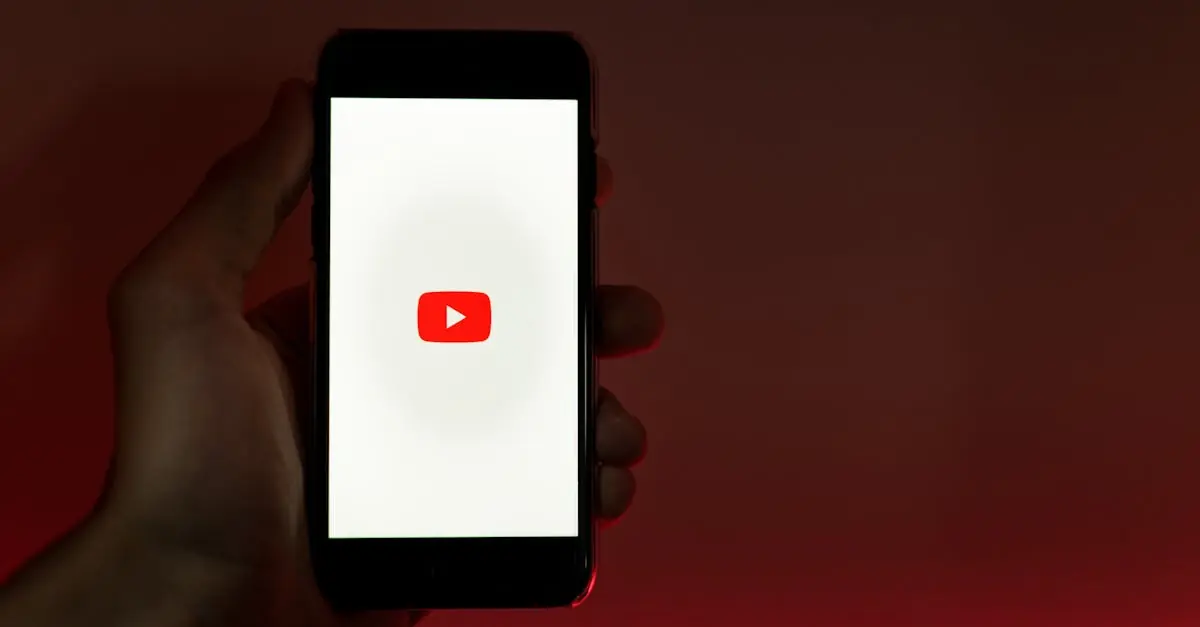Table of Contents
ToggleIn a world where everyone’s glued to their screens, mobile app design isn’t just important—it’s a game changer. Think of it as the digital equivalent of a well-tailored suit; it can make a good first impression or send users running for the hills. With millions of apps vying for attention, a sleek, user-friendly design can be the difference between a download and a digital ghost town.
Overview of Mobile Apps Design
Mobile app design plays a vital role in user engagement and retention. Exceptional design elements grab users’ attention and encourage them to explore the app further. Various factors contribute to effective mobile app design. Usability, aesthetics, and functionality form the core components.
A user-friendly interface simplifies navigation, delivering a seamless experience. Visual appeal remains crucial for immediate user attraction. Color schemes, typography, and iconography all influence perceptions and decisions. Consistency across design elements creates familiarity, which promotes user comfort.
Responsive design ensures compatibility across devices. Designers must consider varying screen sizes and resolutions. Additionally, optimizing load times affects user satisfaction. Slow-loading applications often lead to higher bounce rates.
Engaging users through intuitive layouts increases interaction rates. Incorporating call-to-action buttons strategically encourages desired behaviors. Content should be prioritized, with essential information easily accessible. Providing clear pathways enhances users’ understanding of functionalities.
Feedback mechanisms, like notifications and alerts, inform users of actions and updates. Incorporating user feedback into design iterations fosters loyalty. Validating the user experience through testing helps identify areas for improvement.
Emphasis on accessibility enhances inclusivity. Designing for diverse user needs ensures a broader audience reach. High contrast visuals and screen reader compatibility cater to different users.
Staying updated with design trends and technologies maintains relevancy. Innovations in augmented reality, artificial intelligence, and voice interfaces reshape interactions. Following best practices and industry standards leads to successful mobile app design.
Key Principles of Mobile Apps Design
Mobile app design hinges on several core principles that enhance user experience. Prioritizing the needs of users creates a more engaging and effective app.
User-Centered Design
User-centered design focuses on the needs and preferences of the end-users. This approach involves researching target audiences to understand their habits and expectations. Gathering user feedback during the design process fosters product relevance. Iterative testing helps identify usability issues, leading to iterative improvements. Empathy plays a significant role in creating intuitive interfaces that resonate with users. By aligning design choices with user behavior, designers encourage deeper interaction and satisfaction.
Consistency and Usability
Consistency promotes familiarity and ease of use within the app. Maintaining uniformity across layouts, colors, and fonts reinforces brand identity. Users easily navigate intuitive designs, decreasing frustration. Usability testing helps identify areas for improvement, leading to streamlined experiences. Integrating recognizable icons and clear labels simplifies interaction. Prioritizing clear pathways for actions ensures that users can achieve their goals efficiently. A consistent design combined with solid usability significantly boosts user retention rates.
Mobile Apps Design Process
Designing mobile apps involves a structured process that ensures the end product aligns with user expectations. A thoughtful approach at each stage enhances overall usability.
Research and Planning
Research forms the foundation of effective mobile app design. Understanding target users helps identify their preferences, behaviors, and pain points. Surveys, interviews, and competitor analysis provide valuable insights. Defining clear objectives is equally important. Establishing goals for functionality and user experience sets direction. Mapping user journeys highlights critical touchpoints, ensuring a seamless navigation flow. Prioritizing features based on user needs and business goals streamlines the planning phase. Collaborating with stakeholders keeps everyone aligned, which leads to a shared vision for the project.
Prototyping and Testing
Prototyping allows designers to visualize and test ideas before full-scale development. Creating wireframes and interactive prototypes provides a tangible representation of the app’s layout and functionality. Gathering feedback from users during this stage is essential. Observing user interactions uncovers usability issues that require attention. Iterative testing fosters continuous improvement. Adjustments based on user feedback shape the design so it meets expectations better. Tools for prototyping, such as Sketch or Figma, facilitate rapid iterations. This iterative process ultimately leads to a polished final product that resonates with users, enhancing their overall experience.
Trends in Mobile Apps Design
Mobile app design increasingly reflects current trends in user preferences and technological advancements. Understanding these trends enhances user engagement and satisfaction.
Minimalism and Simplicity
Minimalism dominates mobile app design, where clean layouts enhance usability. Designers focus on essential features, eliminating unnecessary elements that clutter screens. A straightforward interface invites users to navigate effortlessly. With fewer distractions, users can engage with content more efficiently. Simplicity often translates to faster load times, which significantly improves user experience. Clear visual hierarchies guide users to important information, fostering a seamless flow. Effective use of white space complements minimalistic design, creating an appealing aesthetic that draws users in.
Dark Mode and Customization
Dark mode has gained popularity among users seeking visual comfort in low-light environments. This design option reduces eye strain while extending battery life on OLED screens. Developers implement customization options, allowing users to personalize their experience. Adjusting themes and layouts fosters a sense of ownership and satisfaction. Users often appreciate the ability to tailor settings to their preferences, enhancing overall user retention. Combining dark mode with intuitive navigation creates an engaging interface that meets diverse user needs. Incorporating these trends can boost an app’s appeal and foster a loyal user base.
Challenges in Mobile Apps Design
Designing mobile apps presents several significant challenges. One major issue revolves around usability. Users expect intuitive navigation, so any complexity can lead to frustration and abandonment of the app.
Performance optimization is also critical. Apps must load quickly, as slow load times can deter users from engaging further. Developers often struggle to balance functionality with speed, especially when integrating rich media elements.
Another challenge is ensuring compatibility across various devices. A design that looks great on one screen size may not render well on another, leading to inconsistent user experiences. Addressing different resolutions, orientations, and hardware capabilities requires thorough testing.
Accessibility can’t be overlooked either. Making apps usable by individuals with disabilities ensures inclusivity. Designers frequently face difficulties in creating interfaces that cater to diverse needs while maintaining an appealing aesthetic.
Keeping up with ever-evolving design trends poses another hurdle. Trends shift rapidly, and what’s popular today may not be tomorrow. Staying relevant requires continuous learning and adaptation, which can be resource-intensive.
Incorporating user feedback effectively remains vital. While gathering feedback is essential, sifting through insights and implementing constructive changes can prove complex. Designers and developers need to prioritize impactful feedback that aligns with user goals.
Finally, security concerns are paramount. Users want assurance that their data is safe when using an app. Balancing robust security measures with a smooth user experience can challenge mobile app designers significantly.
Mobile app design is more than just aesthetics; it’s a vital component that drives user engagement and retention. A well-crafted design not only attracts users but also keeps them coming back. By focusing on usability, visual appeal, and consistency, designers can create experiences that resonate with users and foster loyalty.
Staying abreast of current trends and technological advancements is essential for maintaining relevance in a competitive landscape. Addressing challenges like accessibility and performance optimization ensures that apps cater to diverse user needs while providing a seamless experience. Ultimately, investing in thoughtful mobile app design is key to standing out in a crowded marketplace and achieving long-term success.





